| Golden Journal No. 50:
Les Portes-Avions
French Carrier Planes
by Mike Bennighof, Ph.D.
April 2024
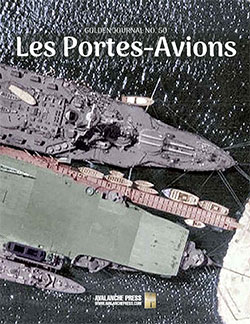 From the late 1920’s to the mid-1930’s, France’s Air Ministry and Navy engaged in a From the late 1920’s to the mid-1930’s, France’s Air Ministry and Navy engaged in a
bureaucratic spat over who would control naval aircraft. The Navy had been reduced to overseeing the planes aboard its battleships and cruisers, and its lone aircraft carrier, but nothing else. As it fought to take back the shore-based squadrons and seaplanes, the Air Ministry responded by strangling development of new carrier planes.
The Marine Nationale eventually won the struggle, and received authorization to build new aircraft carriers. Those new carriers would need new aircraft, and so development surged forward on carrier planes of all types while the revived Aeronautique Navale also bought planes from the United States.
Let’s have a look at the planes that would have graced the decks of the new, never-completed French aircraft carriers.
The French Fighter
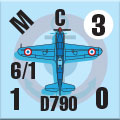 The Aeronautique Navale’s three fighter squadrons entered the Second World War still operating the Dewoitine D.376, a high-wing monoplane first flown in 1932, as the first monoplane in carrier service anywhere. It was a crapulent plane even when new; in 1935, the Lithuanian Air Force refused delivery of its order for 14 machines, insisting on replacement with the D.510. The Aeronautique Navale’s three fighter squadrons entered the Second World War still operating the Dewoitine D.376, a high-wing monoplane first flown in 1932, as the first monoplane in carrier service anywhere. It was a crapulent plane even when new; in 1935, the Lithuanian Air Force refused delivery of its order for 14 machines, insisting on replacement with the D.510.
The Dewoitine D.520 entered service only in April 1940, and thus saw action against the Germans only in limited numbers. French pilots liked it, and in the first weeks of the German offensive the one group equipped with the new plane scored an impressive kill ratio against first-line German planes. As the campaign wore on and planes went aloft in hastily-equipped squadrons with hastily-trained pilots, that ratio declined, but the D.520 had shown itself to be a very good combat plane.
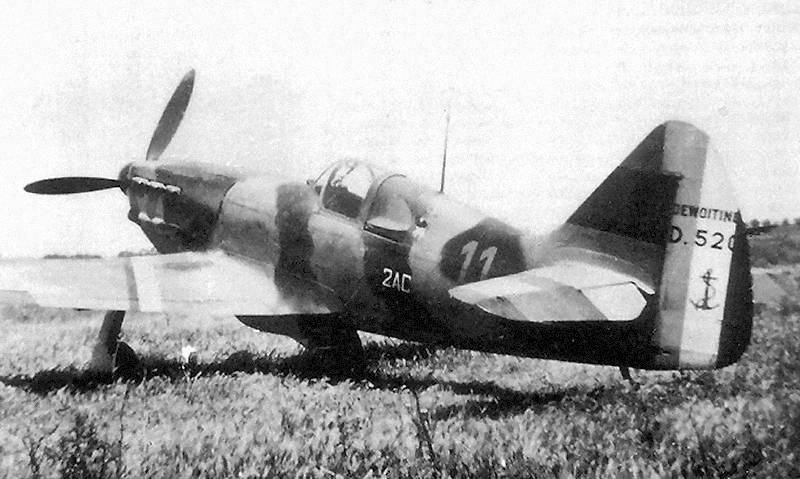
A D.520 of the 2nd Naval Fighter Squadron.
The D.520 had been designed for ease of maintenance and rapid re-arming and re-fueling. It had a powerful armament for the time, with a 20mm cannon and four machine guns. It had an innovative fire-suppression system, and larger fuel tanks than contemporary British and German fighters, giving it better range and loiter time. These were its good features. It was also a difficult plane to fly; that relatively large load of fuel was achieved with wing tanks supplementing the fuselage tanks. The wing tanks don’t appear to have drained evenly, causing instability while in flight. It was under-powered, and despite its very stable dive capabilities, pilots disliked the D.520.
The French Navy actually did operate the D.520 against the Germans; the 1er Flotille de Chasse, the air group of the carrier Béarn (land-based since September 1939) formed two additional fighter squadrons in March 1940, and after training in Calais they moved to Toulouse in June where they received factory-new D.520 fighters. Accompanied by some Polish exile pilots who attached themselves to the flotilla and civilian Dewoitine test pilots determined to fight for their country, the flotilla returned to the North to fight over Toulouse and later over Rochefort. As the Armistice neared, and with it a ban on flights by French aircraft, the naval squadrons abandoned their base at Rochefort, making a final strafing run on their own facilities, and flew into what would become Vichy France.
The Aeronautique Navale placed an order for 120 machines in early 1940, but the D.790 carrier version would never actually be produced. It was a very simple conversion, a production D.520 with carrier arrester gear and strengthened landing struts.
The American Fighter
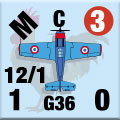 With the D.790 still on the drawing board, the Marine Nationale looked overseas for a modern fighter to equip its new carriers. In late 1939 they placed an order for 81 Grumman G36A carrier fighters, very similar to the F4F-3 ordered by the U.S. Navy. The Anglo-French Purchasing Board assumed oversight of the contract, and the modifications the French wished for their new fighters. With the D.790 still on the drawing board, the Marine Nationale looked overseas for a modern fighter to equip its new carriers. In late 1939 they placed an order for 81 Grumman G36A carrier fighters, very similar to the F4F-3 ordered by the U.S. Navy. The Anglo-French Purchasing Board assumed oversight of the contract, and the modifications the French wished for their new fighters.
In French service, the plane would carry six 7.5mm Darne machine guns, with two atop the engine cowling and four in the wings. Due to export restrictions, it had a different engine than the American version, and French instrumentation and gunsights. The controls were also altered to match other French planes (in French practice, a pilot pulled the throttle backwards to increase power).
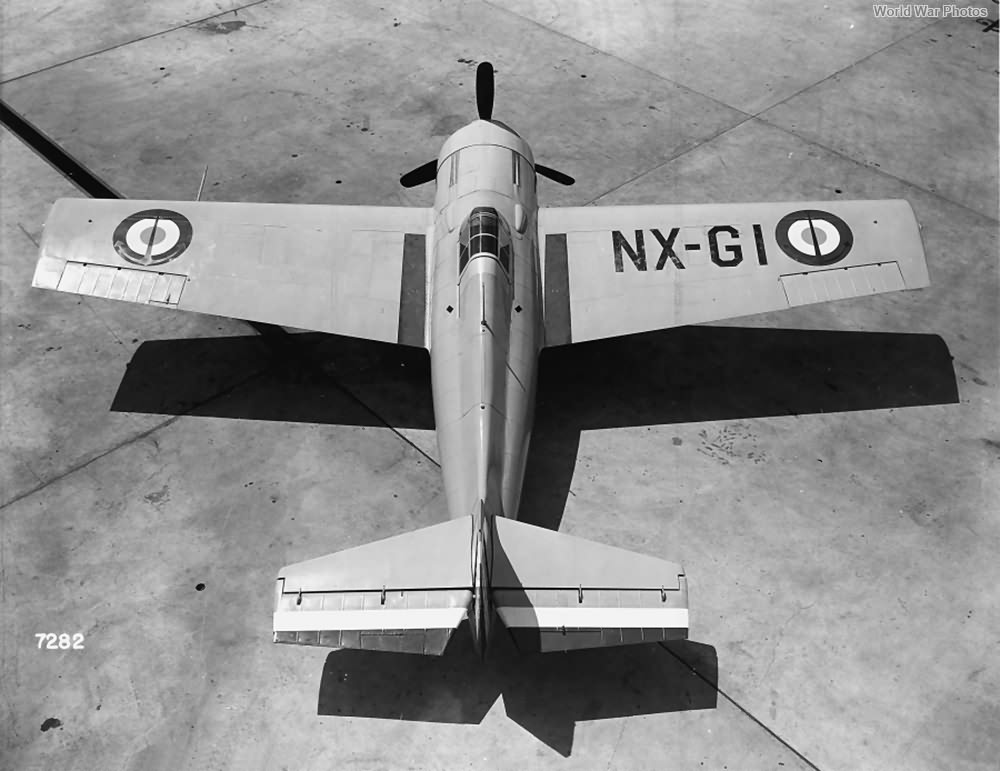
The first French G36A would eventually end up with the Fleet Air Arm.
The first plane took to the air on 11 May 1940, the day after the German offensive against France opened. Grumman had completed seven machines when France collapsed, none of which had been delivered. They went to the Royal Navy instead, which altered the armament, instruments, and controls yet again. Given their much greater range and handling characteristics, the G.36A was probably a better choice for French flattops than the domestic D790, but the Dewoitine plane was built at home and did not require hard currency (in essence, gold) for its purchase.
The French Torpedo Plane
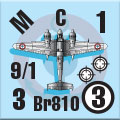 The Aeronautique Navale studied a number of potential torpedo planes before settling on a then-radical solution, a twin-engine attack plane. The Breguet Br.810 would be a navalized version of the Br.693 ground-attack bomber, a plane designed for low-level bombing and strafing attacks on enemy ground troops. The Aeronautique Navale studied a number of potential torpedo planes before settling on a then-radical solution, a twin-engine attack plane. The Breguet Br.810 would be a navalized version of the Br.693 ground-attack bomber, a plane designed for low-level bombing and strafing attacks on enemy ground troops.
The Br. 693 had two engines, mounted on its wings, and a crew of two. It was fairly fast for the time, and carried four machine guns (two firing forward, two to the rear) and a 20mm cannon; the forward-firing machine guns could also be used for strafing. It carried 460 kilograms (just over 1,000 pounds) of bombs in a bomb bay, but had no bombsight.
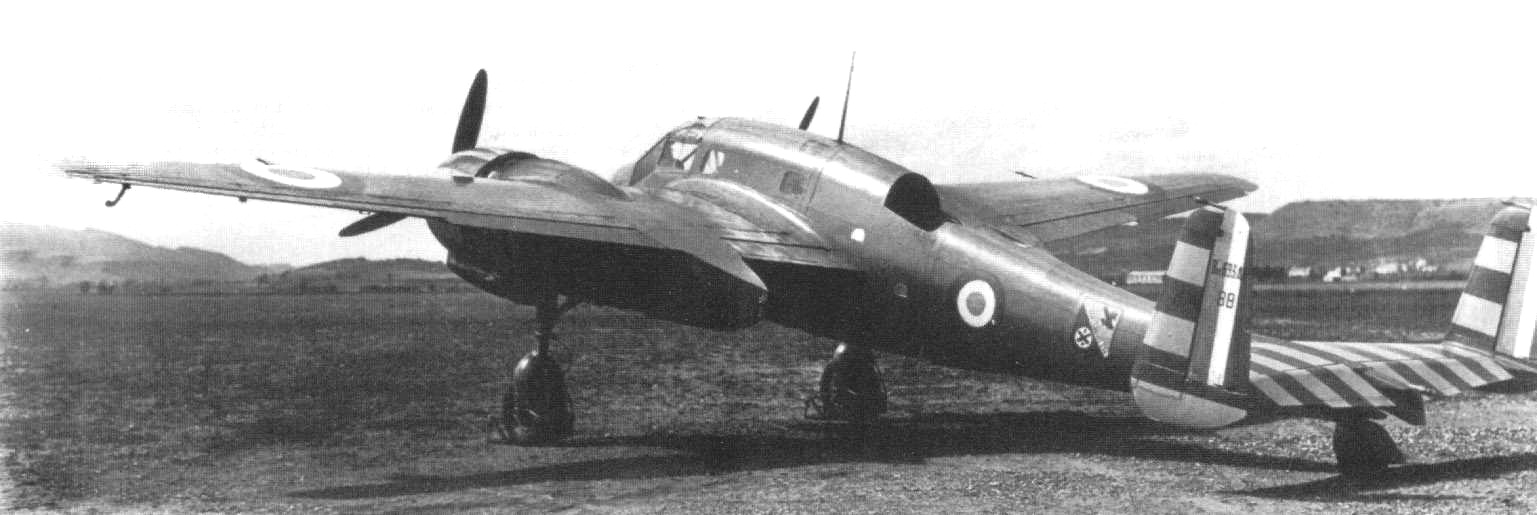
A French Air Force Breguet Br.693.
The Br.693 and the nearly-identical Br.691 (they differed in their engine models) were ordered in the summer of 1938, with deliveries beginning in late 1939 – a remarkably swift turnaround. But the planes came slowly, and only a few squadrons were ready when the Germans attacked in May 1940. The attack planes responded, and then things went very wrong. The Br.691 had been designed with opposition from slow-firing medium-caliber guns and machine guns in mind; the light flak (20mm and 37mm) wielded by the German motorized columns shredded the planes. When they went down on the deck to dodge flak, they became easy prey for German fighters. One hundred eighteen of 205 planes delivered were lost in combat, along with half of the squadrons’ air crew.
The Br.801 torpedo plane would have been very similar to the Br.693, with the bomb bay modified to house a torpedo. It had folding wings, and of course carrier arrester gear. The plane could fly, though not well, on just one engine, and this was considered a valuable capability for a naval aircraft. The Aeronautique Navale was unusual in 1940 for adopting a plane with two engines, but this would become standard U.S. Navy practice after the war.
The French Dive Bomber
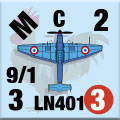 The Loire-Nieuport LN.40 prototype evolved from a series of dive bombers developed through the 1930’s, culminating in carrier trials in July 1939. The plane passed, though it was criticized for its low speed and inability to conduct a combat dive while fully loaded with fuel. Nevertheless, the Aeronautique Navale ordered 36 planes, and the Armée de l’Air matched the purchase. The Air Force would later refuse delivery, and the Navy took those planes, too. The Loire-Nieuport LN.40 prototype evolved from a series of dive bombers developed through the 1930’s, culminating in carrier trials in July 1939. The plane passed, though it was criticized for its low speed and inability to conduct a combat dive while fully loaded with fuel. Nevertheless, the Aeronautique Navale ordered 36 planes, and the Armée de l’Air matched the purchase. The Air Force would later refuse delivery, and the Navy took those planes, too.
The LN.401 (the Navy production model) was an inverted-gull-winged, single-engine plane; the Air Force version lacked the folding wings and arrestor hook but was otherwise identical. The plane turned out to be painfully slow, weakly armed and not particularly survivable in combat.
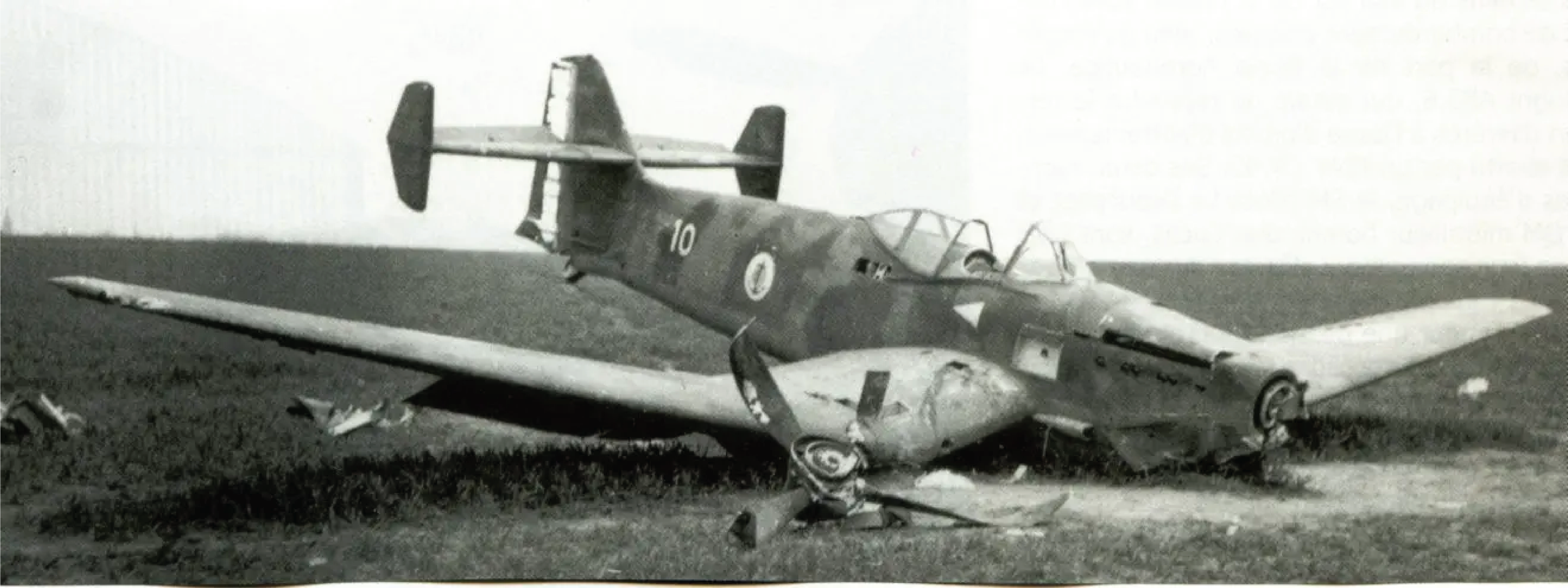
One of the LN.401 planes shot down over Berlaimont on 19 May 1940.
Two of the Navy squadrons took it into battle in May 1940 all the same, soon joined by two more. The first two squadrons (the 1st and 3rd) attacked a German panzer concentration at Berlaimont on 19 May 1940; German flak brought down nine planes, and damaged eight more so badly that they had to be written off. Drawing new planes from Air Force stocks, three dive-bomber squadrons went to the southern front and had some success against Italian targets before flying across the Mediterranean to Algeria. The fourth squadron remained at Cherbourg before flying into soon-to-be-Vichy territory along with the Navy fighters.
The LN.401 was not a very good combat plane, and at least three pilots died trying to use it anyway. It would have given the new carriers a dive-bombing capability, but the Aeronautique Navale needed a better plane. So they bought a foreign, if not necessarily better, plane.
The American Dive Bombers
The U.S. Navy entered the age of the monoplane only reluctantly, clinging to biplanes even as modern, high-performance aircraft left the older style well behind. In 1936 the Navy placed orders for a new dive bomber, but rather than commit to a low-winged monoplane design they ordered both a monoplane and a biplane, in case the one-winged plane failed.
The Aeronautique Navale ended up buying both types; one by choice and one out of desperation. In February and May, 1939, they placed two orders for the Vought SB2U “Vindicator” dive bomber, then equipping about half of the U.S. Navy’s carrier dive bomber squadrons. This was the low-wing monoplane, and while it was a better combat plane than the biplane alternative, it left a great deal to be desired and American air crew called it the “Wind Indicator.” It was abysmally slow, weakly armed, and not particularly accurate as a dive bomber.
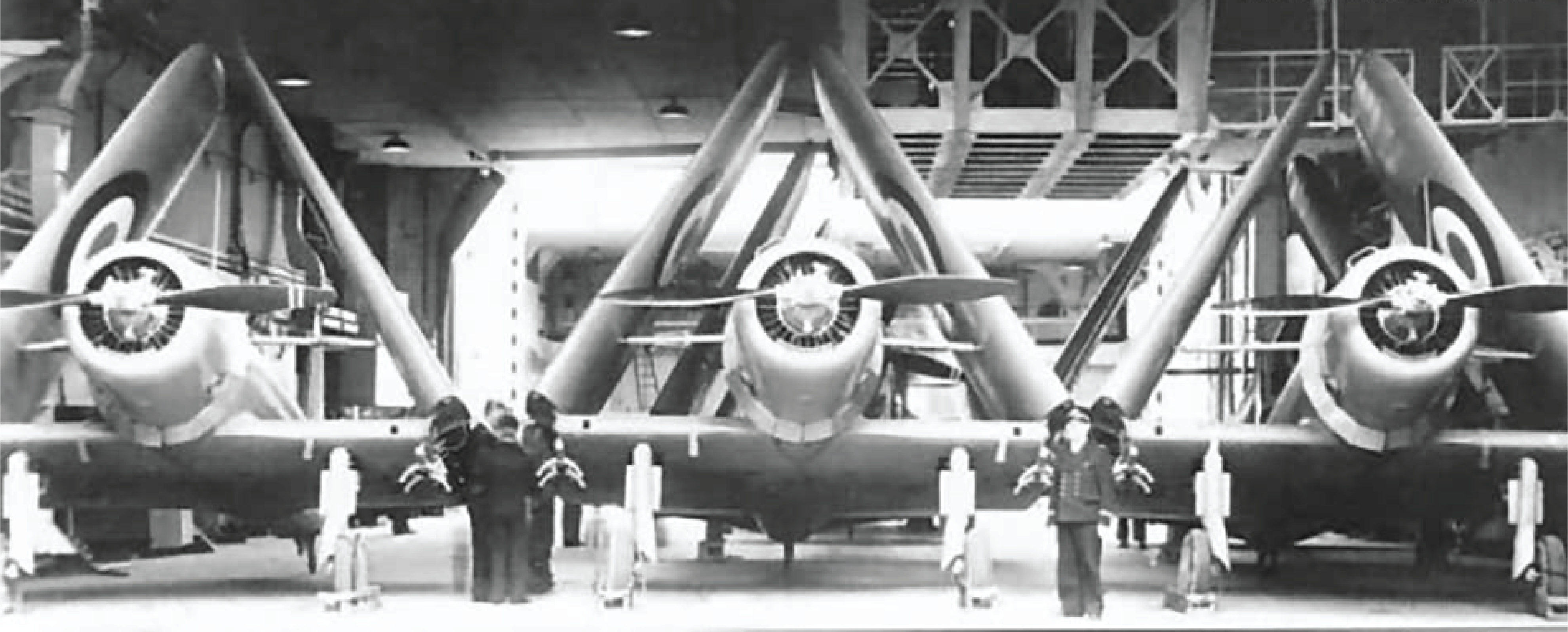
V156F dive bombers aboard the carrier Béarn.
The French planes, designated V156F, were modified like those above, with 7.5mm Darne machine guns, instruments aligned with the metric system, and throttles that increased power when pulled back. Desperate for aircraft of any type, the Aeronautique Navale ordered 50 more of them in March 1940, which would be diverted to Britain after the fall of France.
The first shipment arrived in July 1939; the French pilots carried out carrier qualifications aboard Béarn in the spring of 1940. To what purpose these were carried out is unclear; Béarn would very obviously never participate in combat and with the ongoing war, Joffre lay at least a year from completion.
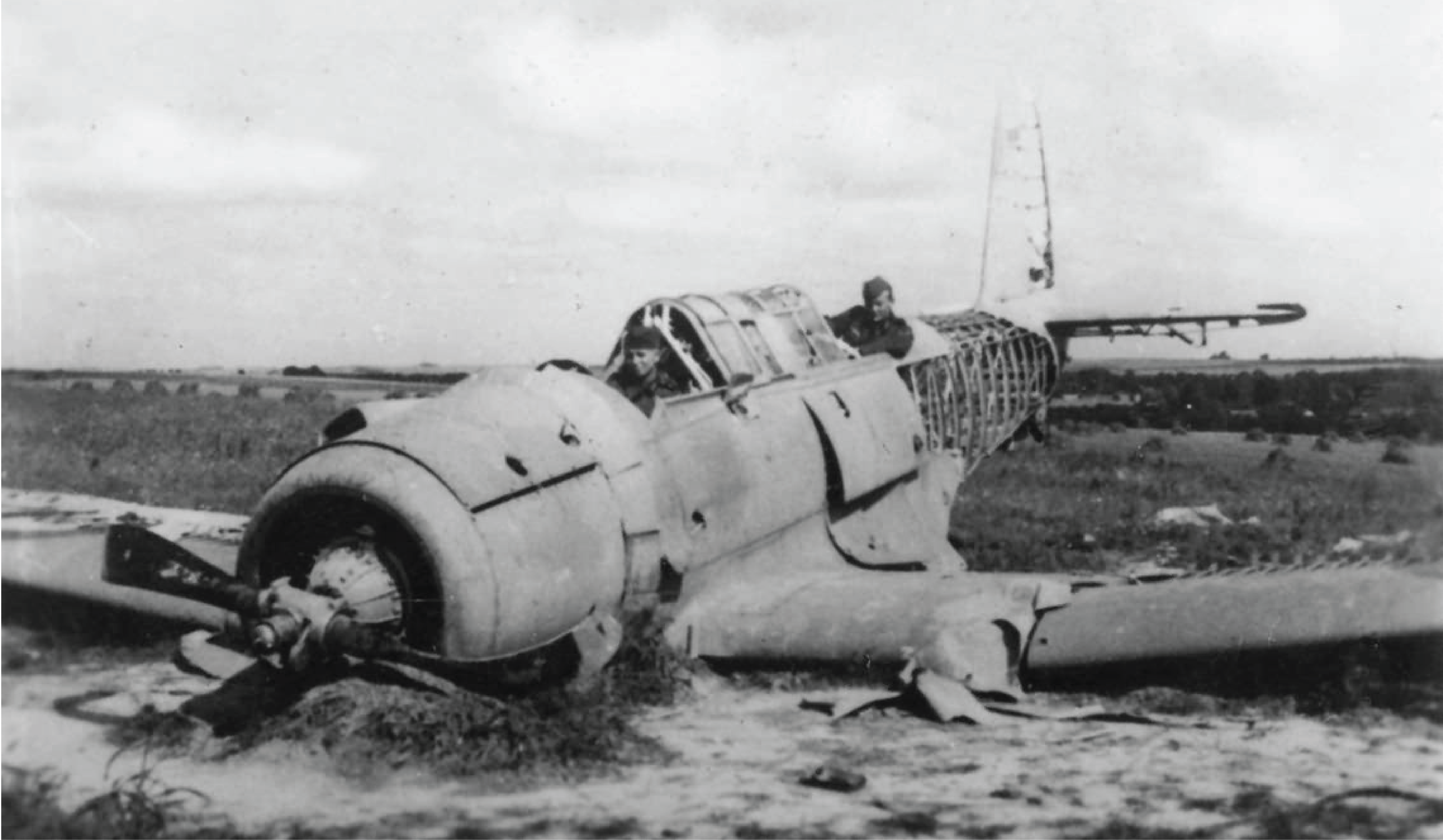 A V156F of the 1st Bomber Squadron, shot down on 20 May 1940. A V156F of the 1st Bomber Squadron, shot down on 20 May 1940.
The dive bomber squadrons instead saw action from land bases, and fared no better than those equipped with the LN.401. A dozen were destroyed on the ground on the first day of the German offensive, and five of 11 planes sent to destroy the bridge at Origny-Ste. Benoîte on 20 May fell victim to a single German fighter plane. With losses replenished from planes kept in storage, the squadrons returned to action to fight the Italians, but by the time of the Armistice few were left operational and the Vichy regime retired the survivors.
The Aeronautique Navale also ordered 90 Curtiss SBC-4 Helldiver biplane dive bombers (designated CW77 by the French) in early 1940, the plane the U.S. Navy had also purchased alongside the Vindicator. When these were not ready by June, U.S. President Franklin D. Roosevelt stretched American neutrality laws to give the French 50 planes out of U.S. Navy storage, replacing their weapons, controls and instruments as had been done with other American-made planes and towing them across the border (with farmers’ tractors, since American laws forbade flying purchased aircraft across the border) to Canada for loading aboard the carrier Béarn. And from there they went to Martinique to rot in the Caribbean sun.
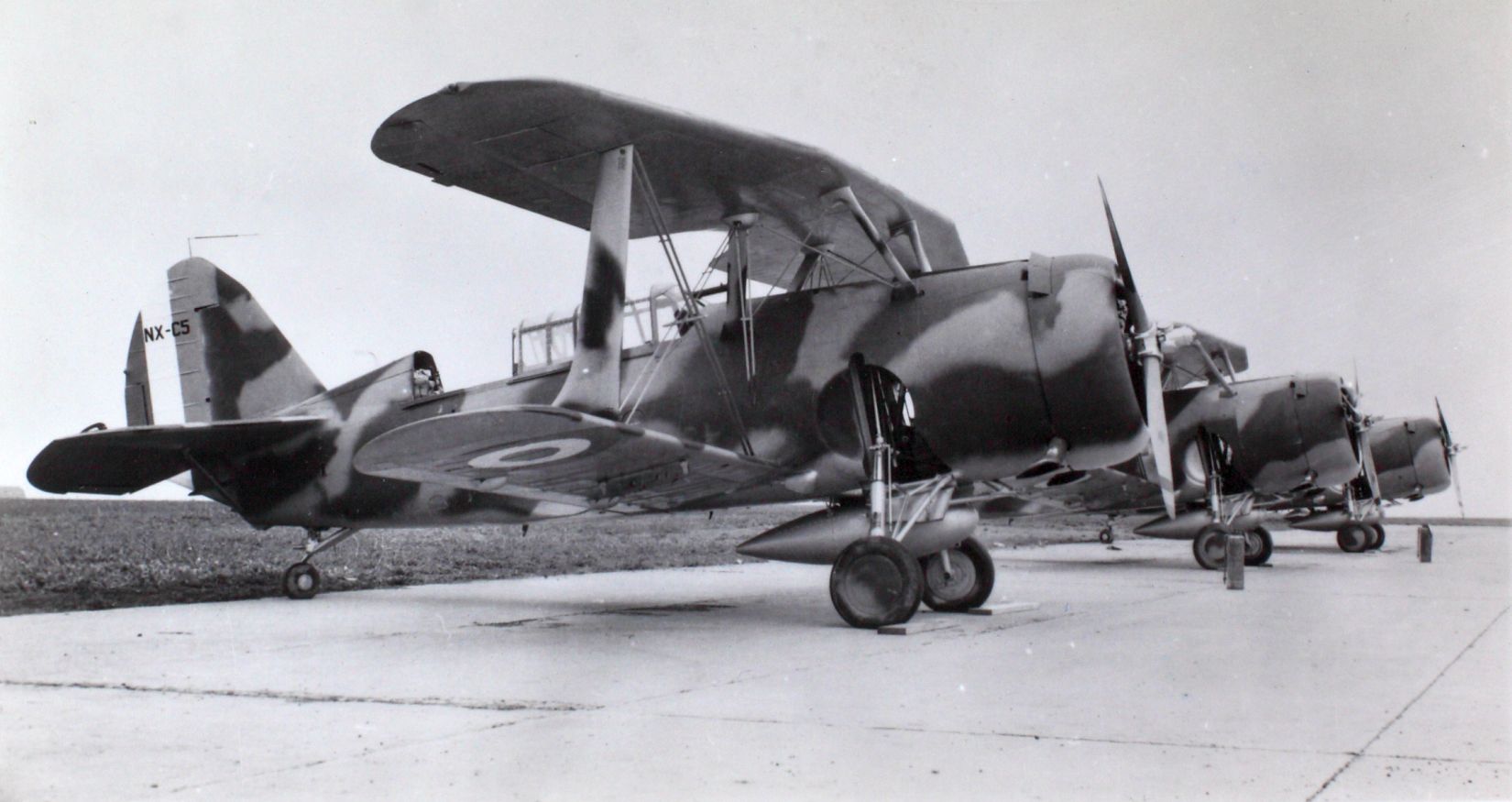
Three of the SBC-4 Helldivers purchased by the
Aeronautique Navale.
The American-made dive bombers were no better than those produced in France. The new French carriers would have had decidedly weak attack squadrons, but that still would have been preferable to having no operable aircraft carriers at all.
The Golden Journal is only available to the Gold Club (that’s why we call it the Golden Journal).
Click here to join the Gold Club.
See your Gold Club Insider newsletter for ordering information.
Sign up for our newsletter right here. Your info will never be sold or transferred; we'll just use it to update you on new games and new offers.
Mike Bennighof is president of Avalanche Press and holds a doctorate in history from Emory University. A Fulbright Scholar and NASA Journalist in Space finalist, he has published a great many books, games and articles on historical subjects; people are saying that some of them are actually good.
He lives in Birmingham, Alabama with his wife, three children, and new puppy. He misses his lizard-hunting Iron Dog, Leopold.
Want to keep Daily Content free of third-party ads? You can send us some love (and cash) through this link right here.
|
